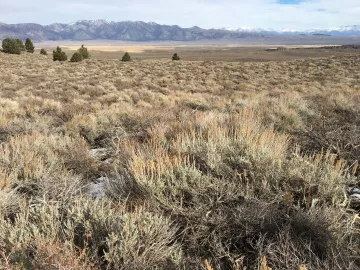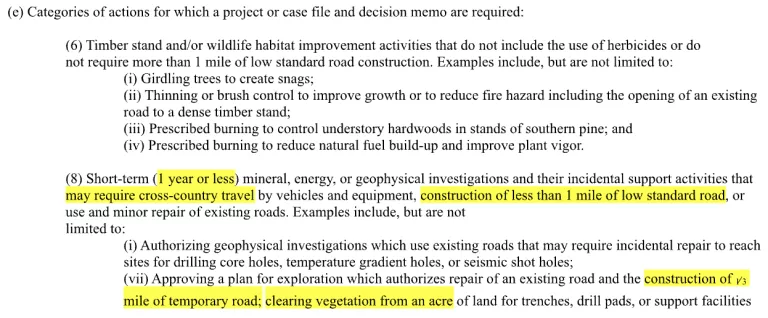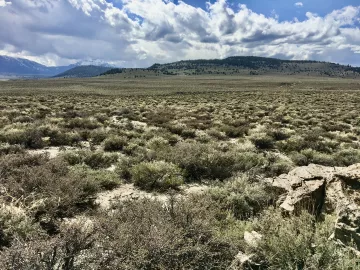By Lynn Boulton
The Sierra Club (through the Range of Light Group), Center of Biological Diversity, Western Watershed Project, and Friends of the Inyo filed an appeal regarding a recent US District Court decision that will allow KORE Mining's gold exploration project at Hot Creek to proceed under a categorical exclusion (CE). CEs are commonly used by the Forest Service for many mineral exploration projects and most of them also impact the environment. We are pushing back because there will be harm to the environment if this project goes forward.
So, what is a categorical exclusion? Federal projects are subject to the 1970 National Environmental Policy Act (NEPA) that defines the degree to which environmental impacts of a project need to be assessed and the degree of public involvement. There are three paths a project can take under NEPA with progressively more intensive studies of the environmental impacts of the project: a categorical exclusion, an environmental assessment, or an environmental impact statement. A categorical exclusion is to be used for projects that "normally do not have a significant effect on the human environment."1 i.e., that pose little or no harm to the environment, e.g., change in ownership, campground concession permits, replacing a bridge, reconstructing a waste disposal system, repaving a parking lot, replacing an outhouse, stream restoration, relocating poorly sited campsites, decommissioning Forest Service roads, etc. The Forest Service puts out a public notice about the project for public comment, 30 days later the agency issues a decision memo most likely approving the project, and the project can begin. I call them "scope and go's".
One of the legal arguments in our case against the Forest Service is whether or not the Forest Service can artificially break the project into two projects and apply two different categorical exclusions: one for the drilling under CE (e)(8) and one for the reclamation (e)(6). We also assert the Project's impacts to the sage grouse and the federally listed endangered Owens tui chub are "extraordinary circumstances" that preclude application of any CE. Third, the Forest Service failed to adequately consider the cumulative impacts of the Project when combined with other activities in the area.
The KORE Mining exploratory drilling part of the project was approved as a categorical exclusion under the rule 36 CFR Part 220.6(e)(8) that says if the project will take a year or less and has less than a mile of temporary roads, it can forego an environmental assessment and public review of the report(s). KORE Mining will be drilling at 12 locations to extract core samples which could be accomplished in a year, but then it is required to put the land back the way they found it as much as possible. The reclamation plan is to loosen compacted dirt at the drill pads, contour the temporary roads, seed the bare areas, and make sure plants are growing back by the end of three years. If not, they are to do it again. So, one legal question is, is this one project or two projects? If it is one project, then drilling + reclamation will take three years or more and doesn't qualify as a categorical exclusion. If it is two projects then the drilling could be categorically excluded under (e)(8) and the reclamation could be categorically excluded under a different category. The Forest Service is using (e)(6) a wildlife habitat improvement category that has no time limit. They argue in their brief that, "The second phase, the outyear wildlife habitat improvement work, includes these activities: “seeding, installing (sage-grouse friendly) fences around the pads to protect seedlings from livestock or wildlife grazing, monitoring revegetation activities on foot, and pulling weeds if needed.”2

I would point out that if KORE Mining didn’t do the drilling, then they wouldn’t have to do reclamation to fix the damage. The types of categories are defined in 36 CFR Part 220.6 Categorical Exclusions:

A lot of environmental harm can happen in a year, with unlimited cross-country travel, a mile of temporary roads, and the clearing of an acre of land. The sagebrush and bitterbrush where KORE Mining will be drilling is 3-4 feet tall, healthy, dense. It is wonderful habitat for sage grouse and deer. The KORE Mining project will cut new road segments to three drilling sites in an area never explored before and will reopen six roads put in 30 years ago that have healed over for a total of 0.39 acres of disturbance. The 12 drill pads will be 30' x 53' for a total of 0.48 acres. Total acreage is just under one acre. It is as if the size of the drill pad is what would keep the project from exceeding disturbance limit, not the size they will actually be. Some of the Forest Service roads to the drill sites are only eight feet wide and might end up being widened by use. A 30' x 53' drill pad is also on the small size compared to drill pads of other projects. They might end up being bigger. This would fall under unintended consequences. The project site is in an area that is riddled with piles of Bi-state sage-grouse scat, old and fresh, indicating that the sage-grouse use the area for nesting, raising their chicks, and possibly mating there. Several known sage-grouse mating sites are not far from the drill sites. Hens and their young have also been spotted close by and on the road on the way in. They will be forced away from the noise and human activity. Late nesters might abandon their nests. The mule deer that migrate through in the fall will also be forced out of the area as well for the year. Then there is an unknown potential impact to Hot Creek because KORE Mining will be drilling 1,400 feet down and at angles in fractured rock and through geothermal groundwater. There will be no monitoring of local wells in the area to monitor possible impacts.

There are two other gold exploration projects in the Bodie Hills that have also been approved as Categorical Exclusions under the (e)(8) category where the environmental impacts have been deemed insignificant. One, the Sawtooth Ridge exploratory drilling project will be removing 750 healthy, mature, pinyon pines to put in drill pads and temporary roads on a steep hillside. Another, the Bald Peak exploratory drilling project will use helicopters to get to the project site that is where pronghorn migrate through to reach their wintering grounds. It is also close to an area used by the threatened Bi-state sage-grouse. The frequent helicopter noise, the constant drilling noise, and the hustle and bustle of people working will push them out of the area.
In all three cases, there are environmental impacts and we contend the Forest Service should have required an environmental assessment that would have been reviewed by the public. I think together we would have come up with less harm to the environment and better mitigations.
For more information about the harms of exploratory drilling, watch our recorded webinar.
1 https://www.ecfr.gov/current/title-40/chapter-V/subchapter-A/part-1508/section-1508.1#p-1508.1(d)
2 Case 2:21-cv-01955-KJM-KJN Document 42 Filed 05/16/22 Page 7 of 20